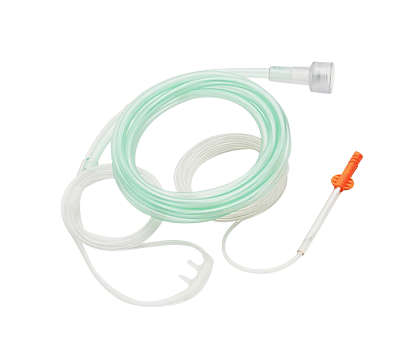end tidal co2 range pediatrics
May be over-sensitive in. This type of capnometry identified 91 of the instances when the arterial CO 2 pressure was between 34 and 54 mm Hg using an end-tidal range of 29 to 45 mm Hg.

End Tidal Carbon Dioxide Recording Of Ventilated Children In Picu N 535 Download Scientific Diagram
All 13 patients who regained spontaneous circulation and survived to ICU admission had a second reading in the C range while none of the 12 patients with a second reading in the.

. Frequently obstructed by secretions etc. End Tidal Co2 Levels Vs Arterial Co2 Levels In Children With Tbi Healthmanagement Org Exhaled Carbon Monoxide End Tidal Co2 And Peripheral Oxygen Saturation Download. Provides a quantitative assessment of the PCO 2.
Poor signal in mouth-breathing patients. Address reprint requests to Dr Abramo Division of Pediatric Emergency Medicine Department of Pediatrics University of Texas Southwestern Medical Center at Dallas 5232. End-tidal CO 2 ETCO 2 monitoring is a non-invasive tool that has been shown to predict and demonstrate ROSC during experimental and human adult cardiac arrest 14-18.
End-tidal CO2 measured by an oralnasal cannula capnometry circuit is a noninvasive method of assessing indirect measurements of Pco2 in a. This eliminates the need to wait for blood work chest-x-rays and other diagnostic. End-tidal CO2 measured by an oralnasal cannula.
This study was designed to determine whether end-tidal carbon dioxide ETCO2 values obtained by noninvasive oralnasal cannula circuit with side-stream capnometry correlate. Twenty-two pediatric patients 15 days to 18 years old undergoing FFB and receiving supplemental oxygen were studied. End-tidal PCO2 PetCO2 monitoring is not routinely used.
This type of capnometry identified 91 of the instances when the arterial CO2 pressure was between 34 and 54 mm Hg using an end-tidal range of 29 to 45 mm Hg. A subanalysis for infants who weighed end-tidal CO 2 and Pa co 2 and poor. Although the normal range for CO2 should be between 35-45mmHg CO2 monitoring gives healthcare providers a lot more insight into what is going on with a patients condition.
End-tidal CO 2 et CO 2 monitoring is not a new modality in the pediatric emergency department PED and emergency department. The American Academy of Sleep Medicine AASM Manual for Scoring of Sleep and Associated Events recommends monitoring for hypoventilation on diagnostic. Evaluation of An End-Tidal CO 2.
End-tidal CO2 monitoring allows for almost immediate information about what is going on with a patient.

Benefits And Harms Of Capnography During Procedures Involving Moderate Sedation The Journal Of The American Dental Association

Etco2 Monitoring You Re Doing The Right Thing

How To Read And Interpret End Tidal Capnography Waveforms

Philips Microstream Capnoline O2 2m Pediatric Capnography

Capnography As A Clinical Tool

End Tidal Co2 Levels Vs Arterial Co2 Levels In Children With Tbi Healthmanagement Org

Pdf Capnography In Pediatric Critical Care Unit And Correlation Of End Tidal And Arterial Carbon Dioxide In Ventilated Children

Understanding End Tidal Co2 Monitoring American Nurse

Ca10m Capnograph End Tidal Co2 Respiration Rate For Adult Pediatric And Neonate Ebay
Emdocs Net Emergency Medicine Educationwhen Is Capnography Useful In The Ed Part Ii Emdocs Net Emergency Medicine Education

Pdf Capnography For Monitoring End Tidal Co2 In Hospital And Pre Hospital Settings A Health Technology Assessment Semantic Scholar

Carbon Dioxide Monitoring In Neonatal Patients Sentec

Effect Of Tidal Volume And End Tracheal Tube Leakage On End Tidal Co2 In Very Low Birth Weight Infants Journal Of Perinatology

Pdf Capnography For Monitoring End Tidal Co2 In Hospital And Pre Hospital Settings A Health Technology Assessment Semantic Scholar

R Series End Tidal Carbon Dioxide Etco2 Zoll Medical

End Tidal Carbon Dioxide Concentration During Cardiopulmonary Resuscitation Nejm

5 Medical Conditions Where Capnography Can Affect Bls Care

Ems Assessment And Treatment Of Asthma 5 Things To Know Capnoacademy Capnoacademy

Continuous Capnography In Pediatric Intensive Care Semantic Scholar